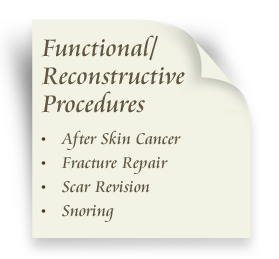
Correcting Men's Sleep Apnea through Reconstructive Surgery
Sleep apnea is a condition in which a person regularly stops breathing during sleep for 10 seconds or longer. As opposed to normal, occasional interruptions in breathing, apnea episodes can occur from five to 50 times per hour.
Obstructive sleep apnea affects twice as many men as women. Most patients are overweight, middle-aged men, but anyone can get it, including children. Men with severe obstructive sleep apnea appear to run a higher risk of heart disease or stroke.
Snoring and sleep apnea are most often caused by an obstruction in the back of the throat (enlarged tonsils, webbed or low-hanging soft palate or uvula); or an obstruction in the nose (deviated septum, nasal polyp, or enlarged turbinate—the bony structure that projects from the side of the nose that humidifies and warms the air).
Treating Chronic Obstructive Sleep Apnea and Snoring
The Continuous Positive Airway Pressure (CPAP) device helps people with obstructive sleep apnea breathe more easily during sleep; it is considered the first line of treatment and the most widely used approach to treat sleep-disordered breathing. In some cases, however, corrective surgery is indicated.
Dr. Morrow typically treats chronic habitual disruptive snoring by removing enlarged tonsils and trimming an elongated soft palate and uvula complex. If a comprehensive nasal examination also demonstrates a deviated nasal septum, enlarged turbinates, or nasal polyps, these can be treated surgically at the same time. Three-quarters of patients will experience a reduction in the intensity of snoring, enabling the patient to once again sleep in the same room as his bed partner. About half the patients will experience a significant reduction in the severity of the sleep apnea.






